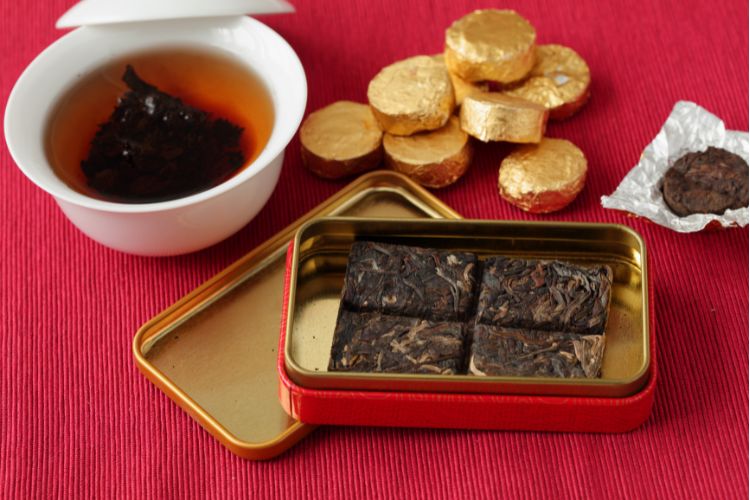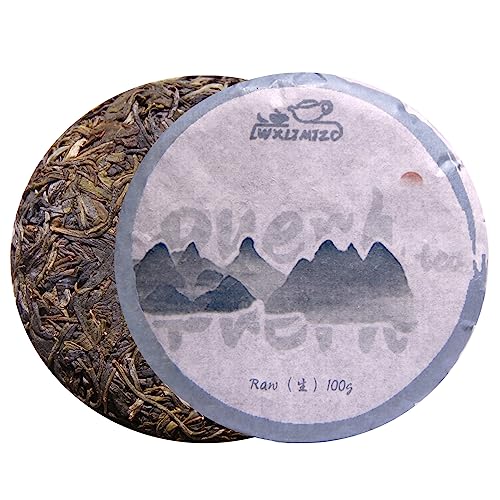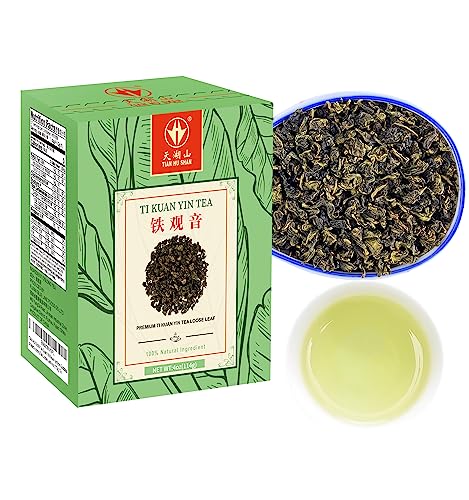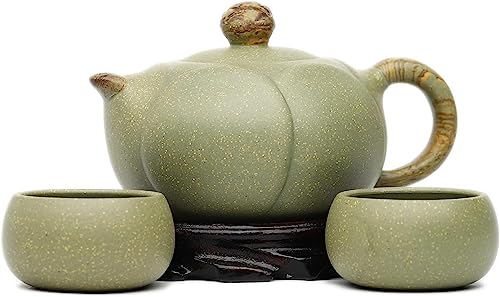Pu Erh Tea vs Oolong Tea: Which Is Better?
Pu erh and oolong are both offshoots of the Camellia sinensis plant, the same plant that gives us white tea, black tea, and green tea.
Yet the way they’re grown, processed, and enjoyed makes them two of the most fascinating teas in Chinese tea culture.
Which full leaf tea is better? This pu erh tea vs oolong guide compares their flavor profile, caffeine content, and health benefits so you can decide which belongs in your cup.
Pu Erh Tea and Oolong Tea: A Tale of Two Tea Cultures
Pu-erh comes from the misty mountains of Yunnan province in southwestern China. Some of these tea trees are ancient, hundreds or even thousands of years old. Almost like living relics. Locals see these trees as their heritage, passed down through families for generations.
In Yunnan, drinking Pu-erh is traditional, often as part of Gongfu tea ceremonies. The tea is brewed in small clay teapots, poured into tiny cups, and enjoyed through many rounds of steeping.
Oolong, on the other hand, is mostly grown in the Fujian province of China and Taiwan. These regions are mountainous, with high-altitude gardens that shape the flavor of the leaves.
Each village or mountain often produces its own Oolong, and tea farmers take great pride in the subtle differences in oxidation, roasting, and rolling that define each tea’s character.

Pu Erh Tea vs Oolong Tea: Key Differences
Beyond the basic black and green tea are Pu-erh and Oolong. After their leaves are picked from the same plant, they develop distinct personalities. Let’s take a look at their differences:
1. Appearance
Pu-erh tea often comes in disks, bricks, or domes. Dense, solid, and sometimes aged-looking.
Loose leaf Pu-erh does exist, but the cakes are the classic form, packed that way for convenience, as they were traded along the old Tea Horse Roads.
Oolong tea leaves are usually twisted and curled, or sometimes rolled into small balls. When brewed, the leaves unfurl, becoming much fuller in your teapot.
The appearance can vary a lot depending on where the tea is grown, from one tea farmer to another. For example, Oriental Beauty has delicate, wiry leaves, while Golden Oolong is tightly rolled into balls.
2. Processing Method
Tea production is where the real split happens between our two star teas.
After harvesting, Oolong tea leaves are withered, bruised, and partially oxidized before being fired to stop oxidation. The precise tea production style varies by region and tea master, which is why there’s so much variety, as I’ve mentioned a few times already.
Now, Pu-erh tea leaves are either aged naturally to make raw Pu-erh (sheng) or artificially fermented through a post-fermentation process to create ripe Pu-erh (shou).
Over time, microbial activity continues to change the tea’s character. Many Pu-erhs are pressed into cakes for long-term tea storage. Some are kept loose.
Because of these differences, Oolong tea is better described as a partially oxidized tea, while Pu-erh is often considered a fermented tea.
3. Flavor Profile
Pu-erh is one of those teas that can really surprise you. A lot depends on whether it’s ripe or raw, and of course, the quality.
Shou Pu-erh is famously earthy, but the best examples are mellow, even a little sweet. Some are rich and malty, while others are lighter, almost fruity. Give the leaves a quick rinse to wash away any off-notes.
Sheng Pu-erh tea cake is surprisingly bright. It’s tart, slightly spiced when young, but darkens with age.
- 🍃【NATURAL PU ERH TEA】Raw pu-erh tea cakes are produced in Yunnan, China, and are made from…
- 🍃【PERFECT TASTE AND AROMA】Raw pu’er tea is unfermented, so it retains a mild and fresh…
- 🍃【DELICIOUS RAW PUERH TEA】 Each small cake is 100 grams, firm and not loose, with clear…
Oolong tea is also complex, with flavors that change depending on oxidation levels. It can range from lightly oxidized, almost green teas, to heavily roasted, nearly black teas. This is why Oolong is known as the most versatile of all teas.
Some Oolong flavor variations:
- Tie Guan Yin: Floral and buttery
- Ali Shan Oolong: Creamy and milky
- Oriental Beauty: Naturally sweet with honeyed notes
- Phoenix Oolong: Fruity and floral, with flavors that mimic tropical fruits or orchids
- Place of Origin: The Ti kuan yin tea leaves are picked from the high mountain tea gardens, which…
- Processing: Tie guan yin oolong tea undergoes unique processing techniques that involve withering,…
- Appearance: Ti kuan yin belongs to oolong tea has a unique appearance with tightly curled leaves…
4. Caffeine Content
Pu-erh and Oolong both bring caffeine, but not coffee-level highs. It’s the energy hit that differs.
Pu-erh tea, especially young raw types, can be strong and sharp. Ripe Pu-erh often gives a steadier, smoother lift. Meanwhile, oolong tea sits in the mid-range, giving you enough for focus, minus the jitters.
If you’re caffeine-sensitive, adjust steeping time and brewing temperature.
5. Health Benefits
Both teas have plenty of fans who drink them daily for more than taste. For instance, Pu-erh tea has been used in Chinese medicine for its digestive properties. It’s said to support gut health and lower cholesterol levels.
Oolong tea’s health benefits are also plenty. It promotes metabolism, heart health, brain function, and weight management. Its antioxidant content falls between those of green tea and black tea.
6. Preparation and Storage
For Pu-erh tea: boiling water works, but keep the steeps short. Alternatively, brew for 10 to 20 seconds, Gongfu-style, to bring out layers.
A Yixing clay teapot is perfect if you’re planning to brew Pu-erh often. The unglazed clay absorbs the tea’s flavor, so the more you use the teapot, the better your tea will taste.
- 335ml Yixing Clay Teapot wiith 2 Small Gongfu Teacups,Certificate x 1,Gift Box x1;Any…
- Creative teapot shape -青莲, 50% handmade, build in strainer; Molded press then hand refine by the…
- The Yixing Cyan Clay(宜兴紫砂,原矿豆青砂), Lead-free, Cadmium-free; Similar to the green…
For Oolong: Brew at around 185–205°F. Leaves expand over multiple steeps, so don’t stop at one. Flavors evolve with each cup.
A note on tea storage: Oolong tea is best sealed airtight. Pu-erh, in contrast, benefits from age, so let it breathe.
7. Price and Quality
Oolong pricing depends on quality and origin. High-mountain Oolong or hand-picked Silver Needle Oolong can be pricey. Everyday Oolongs, though, are affordable and widely available.
- Harvested in India – High Mountain Oolong tea from India, grown in elevated regions, offers a unique…
- 100% Pure Flavorful Blend – This light and floral-fruity oolong tea, made with pure oolong and 100%…
- Full-Flavor Tea Bags – High-quality tea leaves in plant-based biodegradable tea bags with its…
Pu-erh is unique in that it ages. Some collect Pu-erh cakes, pushing prices higher, especially for older, rarer batches. A well-stored cake can become a family heirloom, growing in value over time.
The Final Scoop
Pu erh tea vs oolong. Same plant, different experience.
But one isn’t better than the other. Many tea drinkers keep both on hand: Oolong for afternoons, Pu-erh after heavy meals.
You really don’t have to choose. Try a sampler set of Oolong teas to explore different oxidized flavors, and pick up some Mini Tuo Chas to see how fermented teas compare.






